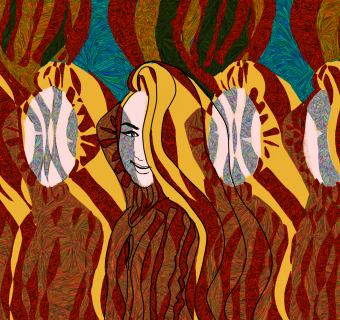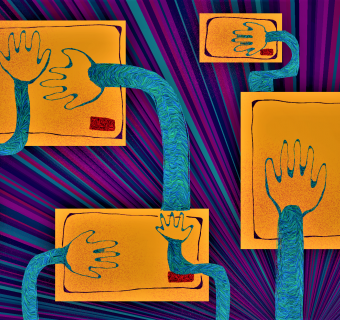It is tea time and Mary, Queen of Scots is sitting next to me on a rickety bench on a gritty sidewalk. Up the hill is a stone castle. This, I think, is what I expected adult life to be — a posh tea, flower blossoms in glass teapots. Pour the water from the speckled blue pot, down the spout, down, down. Into the other elegant, clear glass pot, over the spiky little flowers that look as though they’ll disintegrate with the slightest human touch. But somehow, the hot water brushes over them and they bloom all over again. Strange, I think.
Abby is discussing her golf plans for the weekend while Grace giggles at a photo of a groundhog on her phone. Sloane munches thoughtfully on her sandwich and Whitley takes a careful sip from her steaming cup. Mary sits quietly beside, waving her hand back and forth, back and forth through the steam rising from my teacup. I want to tell her to stop, that I don’t want her hand to be burned by the steam, but she is the host, so I sit idly by. Back and forth, back and forth.
This is not our first tea party. When I was a child, Mary would attend all my teddy-bear tea parties, my fake dinners cooked in my plastic kitchen. She always wore a pink flounced dress with white lacy ruffles. I envied that dress — envied her elegance, her poise, her charm, her regality, how she would float through the room, glass teddy eyes swiveling to watch her as she passed. All of these qualities have only multiplied as she has aged — her once brown hair has begun to mimic the rusty red of a cool autumn day. She is tall, almost six feet, and her once pink-ruffled taste has evolved into black lacy elegance. She is a commanding sight on this gray day, all angles and sharpness and hard gracefulness.
I didn’t realize, for a long time, that it was Mary (Queen of Scots) that was visiting me in my pale yellow bedroom. She always wore a white lace ruff around her neck, so I never quite saw that red slit from ear to ear that plagues her now. But she was also so kind and demure, words one would never read to describe her in history books. Mary, Queen of Scots, at a tea party? Shouldn’t she be busy enacting vengeance on those who made her pay for her power?
Except for that red slit, you would almost believe she is the perfect woman. We choose to ignore it, because we know it bothers her, a sign of what she believes to be her failure. We’ve tried to tell her it doesn’t matter to us, that we think it’s beautiful, that it’s perhaps because of it that she’s become such an icon. Saoirse Ronan played her in the last movie, for God’s sake. But she doesn’t listen, so we don’t mention it anymore.
When we entered Edinburgh, we were strangers, Grace, Sloane, Abby, Whitley and I. Mary knew us all, and we knew her. I was flustered to learn I was not the only one she visited for false teas — perhaps she visited me the earliest in my life, but she’d visited us all before. Hung over our heads, just behind our backs, in our mirrors and on our beds, haunting us benevolently with her piercing stares. It was her that brought us across the ocean to come here, pushed us together, told us to keep studying and drinking tea until we ended up at this luncheon she threw for us to remind us of how lucky we are. How lucky we are that strangers have become friends, that we can laugh over cups of steaming tea, that we can be united by a semi-headless, controversial historical Scottish queen in this brief afternoon pause.
There’s something beautiful about those moments when the whole world stops — when we all take a collective breath, especially when it is with those we love. In. Out. A flourish, a beat, and then the world begins again. Why do we never take this time? Because I think we don’t realize that one day, we will not be able to stop but will have to. Mary tells me this through the slit in her otherwise pristine porcelain neck as we sit at tea time in New Town, polished rain drops bashfully caressing our windswept baby hairs.








